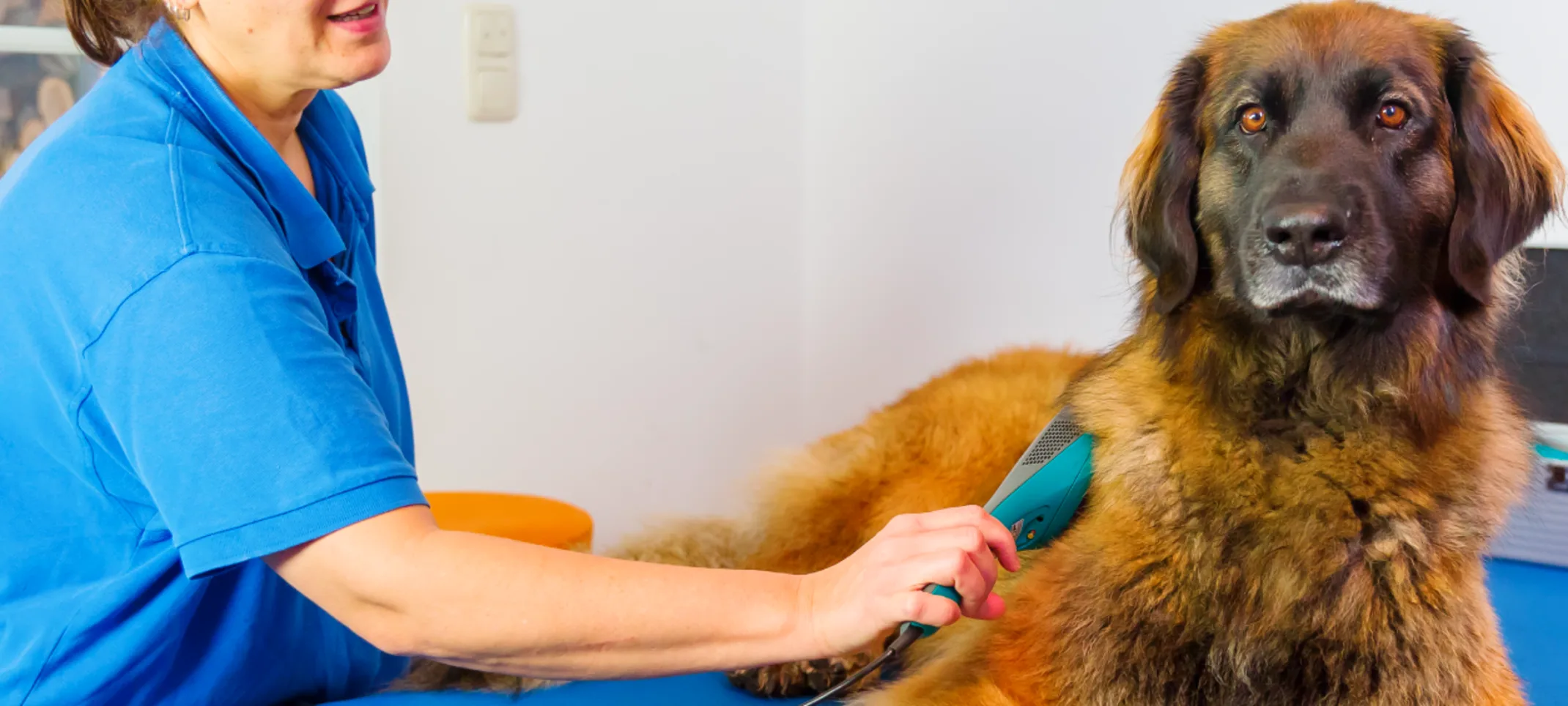Martin Downs Animal Hospital
Companion Laser Therapy
Laser Therapy is an FDA-cleared modality that reduces inflammation and that results in pain reduction. Laser Therapy is effective in treating acute pain, chronic conditions, and post-operative pain.

How does Companion Laser Therapy help pets?
Laser Therapy is an FDA-cleared modality that reduces inflammation and that results in pain reduction. Laser Therapy is effective in treating acute pain, chronic conditions, and post-operative pain.
Laser therapy treatment is safe, painless, and fast. Treatments to deeper tissues are administered in 5 to 10 minutes. Typically, even chronic patients exhibit improvement after 3 to 5 treatment sessions. Laser therapy utilizes the body’s own healing powers by stimulating cellular activity. Despite short treatment times, laser therapy treatments initiate a healing process that continues to actively reduce inflammation for up to 24 hours after treatment.
Companion therapy lasers are the most popular among veterinarians. Laser therapy is a clinically proven modality in both human and veterinary medicine. LiteCure, the parent company of Companion, is the leader in scientific research and education.
Common Uses of Companion Laser Therapy
Help your pet heal with therapy laser. Drug-Free. Surgery Free. Relief for your pet. Therapy Lasers have been scientifically proven and successful in treating post-surgical pain and many acute and chronic conditions.
Acute Conditions ( Otitis, Anal saculitis.Aural hematomas, Trauma, Injury or any issue which causes your pet to have Pain, Inflammation and Needs faster healing.)
Wounds
Allergies
Infections
Cuts/ Bites
Inflammations
Tooth Extraction Pain Relief
Sprains, Strains & Fractures
Post-Surgical Healing / Pain Relief → Chronic Conditions
Degenerative Joint Disease → Inflammatory Bowel Disease → Periodontal Disease
Lick Granulomas
Geriatric Care
Hip Dysplasia
Feline Acne
Tendonitis
Arthritis
Common Questions About Laser Therapy
Is laser therapy new?
The beneficial effects of laser light on tissue were first recognized almost forty years ago. Since then, there have been thousands of studies documenting the positive effects laser light has on different types of cells, tissue, and disorders. Recent advances in technology and manufacturing have made it possible to have this exciting modality available and affordable for clinicians.
How long does the treatment take?
Treatment protocols are unique to each patient and condition. Therefore, treatments will vary in time, complexity, and cost. For some chronic patients, multiple joints will be treated during one laser treatment session. When appropriate, laser therapy can be used as a complementary adjunct to other treatment plans.
What's involved with treating my pet?
The laser light is delivered through a non-invasive handpiece to treat the affected area. Your pet will feel a gentle and soothing warmth. As the laser is administered, many pets will relax, much like you would while experiencing a good massage. The almost immediate relief of pain will allow your pet to be comfortable and any anxiety that your pet initially experienced will dissipate.
What can be treated with laser therapy?
If your pet is feeling pain, has inflammation, or a wound, the laser is a sterile, pain-free, surgery-free, drug-free treatment. The laser is used to treat a variety of injuries, wounds, fractures, neurological conditions, numerous dermatological problems, and pain. Whether your pet is rehabilitating from trauma or injury, healing from wounds, or simply aging, the laser has been shown to provide relief and speed healing.
How does it work?
The Companion therapy laser system sends photons, or packets of light energy, deep into tissue without damaging it. These photons are absorbed within the mitochondria of the cells and induce a chemical change called “photo-bio-modulation”. This light energy then inspires the production of ATP in the cell. ATP is the fuel or energy, cells need for repair and rejuvenation. Impaired or injured cells do not make this fuel at an optimal rate. Increased ATP production leads to healthier cells, healthier tissue, and healthier animals.
Are there any side effects?
There are no known side effects with this treatment.
What can I expect at home?
You might see a change in activity when your pet comes home. For some it might be increased activity and others may be more relaxed. This is due to the pain relief and reduction in inflammation.
How should I support this treatment at home?
There are no specific things you need to do at home, other than follow normal restrictions, dietary needs, and additional treatment protocols as your pet’s condition dictate and is outlined by your veterinarian.
What to expect during a Companion Laser Therapy treatment session for your companion.
Simply put, it provides relief. The fur does not need to be clipped. Eye protection will be worn by the laser operator and anyone in close proximity to the laser probe. The eyes of the animal will be directed away from the treatment area or covered with a towel or eyewear. The clinician will move the probe over the area of treatment to assure the laser is being delivered to the area which needs improvement.
What will my pet feel?
As the laser is administered, often pets will relax and enjoy, much like you would experiencing a good massage. The almost immediate relief of pain will allow your pet to be comfortable and any anxiety that your pet initially experienced will dissipate. Occasionally, angry cats will start to purr and dogs will fall asleep during their therapy session.
Is there anything my pet should or shouldn’t do, or take, while on the treatment?
Just follow normal treatment protocols as outlined. You do not need to be overly cautious nor should you overdo any activities. Just business as usual.
When can I expect to see an improvement? What might I see?
You may see relief in the first treatment or two as pain and inflammation are reduced. For example, better mobility for joint conditions, drying, and healing of dermatological issues, faster healing for wounds and incisions, or your pet just seeming more relaxed and comfortable. For some conditions, a series of treatments may be necessary before you see results due to the severity or complexity of the condition. Each pet is different, and treatments are unique for your pet’s specific needs.
